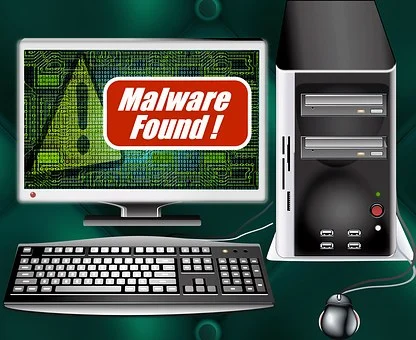Protect Your Organization Against Linux Malware Attacks with Comprehensive, Automated Patch Management

Linux is widely recognized for its impressive levels of security and stability offered to admins and organizations. However, the popular open-source operating system is not immune to malware, viruses, and other network security threats.
In fact, attackers now view the OS as a viable target due to its rapidly growing user base, its high-value servers, and the devices it powers worldwide. The number of new Linux malware variants reached a record high in the first half of 2022, as nearly 1.7 million samples were discovered. Threat actors frequently exploit unpatched cyber security vulnerabilities in software and applications to gain access to corporate networks, enable malicious code, and compromise critical systems. Thus, having a reliable patch management strategy in place is crucial in identifying and remediating network security issues before they are exploited by adversaries in damaging malware attacks.
Despite the critical importance of effective data and network security, too many organizations still neglect to implement the Linux patch management best practices. This could be due to limited time and resources, the threat of numerous cyber security vulnerabilities throughout an entire network, and minimal opportunities to prioritize such risks prior to them resulting in attacks on network security. In this article, we introduce an automated Linux patch management solution that can help your organization overcome these obstacles, defend against Linux malware and other malicious network security threats, and maintain complete visibility and control over your system.
Why Is Linux Malware A Serious & Growing Threat for Businesses?
The evolution of malware research has provided superior visibility into attacks in network security threatening Linux servers. Just like any other software, unpatched cybersecurity vulnerabilities in Linux can be exploited by malware operators to gain unauthorized access to a system. A vulnerable server is an open door for data and credential theft, Distributed Denial-of-Service (DDoS) attacks, cryptocurrency mining, and web traffic redirection, leaving it susceptible to becoming a host for Malicious Command and Control (C&C) servers. Anandraj Paul, Head of Development for Endpoint Security at ManageEngine, elaborates, “Unpatched vulnerabilities can also be leveraged to install backdoors or create botnets which can be used to launch further attacks or steal resources from the infected Linux system. These flaws are often targeted by automated attacks that spread rapidly and infect many systems within a short period of time.”
In recent years, the Linux malware network security threats have become more sophisticated, with attackers leveraging advanced techniques such as fileless malware, weaponized documents, code injection, and Zero-Day attacks that can compromise systems. With the rise of cryptocurrency, mining malware, ransomware, and banking trojans, Linux is a target for gaining financial data through servers, desktops, and IoT devices like routers, cameras, and smart appliances, all of which are often more vulnerable to attacks since due to cybersecurity vulnerabilities and weak data and network security practices.
These network security threats have magnified the importance of having the right technology and systems in place to detect and remediate network security issues that these advanced malware attacks exploit. With the rapid evolution seen in recent years, Linux malware is now harder to detect and mitigate, so cybersecurity trends need to be implemented immediately.
Modern malware can evade detection by traditional antivirus solutions through the use of advanced techniques such as polymorphism, rootkits, and encryption. Rangaraj Santhanam, Head of Linux Development for Endpoint Security at ManageEngine, explains, “Threat actors are also increasingly using Linux malware to specifically target organizations, industries, and even individuals. These targeted attacks can be more difficult to detect because they are customized to evade security measures that the target may have in place.” Linux implementation into business-critical systems and on the cloud has increased the attack surface for Linux malware.
Linux security expert and LinuxSecurity.com Founder Dave Wreski, warns, “It is critical that organizations are able to find and fix unpatched security bugs before cybercriminals have the opportunity to exploit them to infect devices and systems with harmful malware that can lead to downtime and compromise. Implementing an automated patch management and compliance solution is an efficient and effective way to ensure that security bugs aren’t left unaddressed.”
Comprehensive, Automated Protection Against Unpatched Security Vulnerabilities Leaving Businesses Susceptible to Attack
ManageEngine Patch Manager Plus is a comprehensive security patching solution for Linux, Windows, and macOS that offers automated patch deployment for endpoints. It's available both on-premises and on the cloud. With Patch Manager Plus in use, businesses can scan endpoints to detect missing patches, test patches, automate and customize patch deployment, make use of pre-built, tested, ready-to-deploy packages, and gain better visibility and control by conducting powerful audits and accessing comprehensive reports.

ManageEngine Patch Manager Plus addresses growing Linux malware threats by:
- Patching known cybersecurity vulnerabilities in real time for admins before attackers can exploit them.
- Automating patch management processes, from detecting, testing, approving, and deploying patches to ensure that network security issues are consistently patched across all Linux systems to reduce the quantity of missed or delayed patches and to negate the possibility of any manual error.
- Integrating cloud security scanners that identify and patch vulnerabilities rapidly, all from a single console.
- Patching for Linux OS and third-party applications, including enterprise-use ones like Red Hat, SUSE, and Ubuntu, and more general distros like Debian, CentOS, Pardus, Oracle Linux, and Rocky Linux.
- Improving compliance by utilizing in-depth reporting capabilities to meet regulatory requirements for patching and maintaining system data and network security.
Here are the benefits of using Patch Manager Plus to protect your cybersecurity vulnerabilities:
- Blazing speed: Automate patch management to get more endpoints patched in less time.
- Flexibility: Gain the ability to customize deployment policies to meet your enterprise's patching needs.
- Reliability: Secure networks by applying timely patches to OS and applications.
- Compliance: Achieve 100% patch compliance status across all systems.
- Visibility: Use powerful audits and reporting to better analyze and fix network security issues faster.
Patch Manager Plus includes reporting capabilities like:
- System Health Reports: Patch Manager Plus classifies the systems in the network based on their vulnerability: “Highly vulnerable,” “Healthy,” and “Health Not Available.” Leveraging this report, admins can have a holistic view of the health status of their systems during audits.
- System Compliance Graph: Admins can get an overview of the systems that are compliant or non-compliant in the network.
- Missing Patches by Severity: Right from the console, admins can access an overview of the patches missing in the network based on their severity: Critical, Important, Moderate, Low, and Unrated. This ensures timely remediation and prioritization of cybersecurity vulnerabilities based on their severity.
For these reasons, ManageEngine Patch Manager Plus meets all of the LinuxSecurity team’s criteria for an effective and efficient Linux patch management solution that organizations can deploy to protect against malware and other network security threats that exploit unpatched problems.
Final Thoughts on Patch Manager Plus’ Linux Malware Protection
Linux malware is a serious and growing network security threat but can be prevented with responsible administration and the implementation of a comprehensive patch management and compliance solution like ManageEngine Patch Manager Plus. Wreski concludes, “The majority of malware attacks on Linux systems can be attributed to misconfigured servers and unpatched vulnerabilities. Having a patch management solution in place that you can count on to fix security bugs before they are exploited in damaging cyberattacks is of critical importance in protecting against Linux malware and improving your organization's overall security posture.”
Sign up for a free 30-day trial of ManageEngine Patch Manager Plus and improve your security posture through your patch management and compliance strategies to defend an unlimited number of endpoints against Linux malware and other dangerous, pervasive attacks in network security.





















